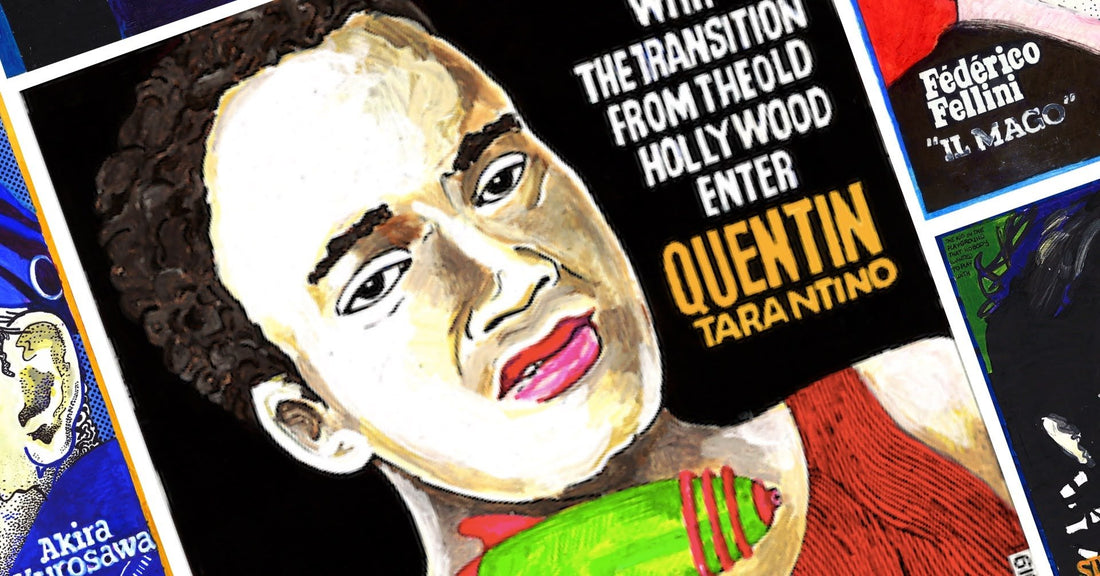
Quentin Tarantino: The Mastermind Behind Ultraviolent Cinema
Share
Born on March 27, 1963, in Knoxville, Tennessee, Quentin Jerome Tarantino was never meant to be ordinary. Raised by a single mother in Los Angeles, he was drawn to movies from an early age—not just watching them, but obsessively studying them. By the time he was a teenager, he had dropped out of high school and took a job at a video rental store in Manhattan Beach. That store, Video Archives, became his film school. He spent hours talking to customers about obscure foreign films, spaghetti westerns, kung fu flicks, and grindhouse cinema. It wasn’t long before the self-taught film buff wanted to make his own mark.
Tarantino broke into Hollywood with the release of Reservoir Dogs in 1992. The indie crime thriller, made on a shoestring budget, introduced audiences to his now-signature style: nonlinear storytelling, razor-sharp dialogue, unforgettable characters, and sudden, graphic violence. The film became a cult classic, instantly earning Tarantino a reputation as an audacious new voice in cinema.
But it was Pulp Fiction (1994) that rocketed him into global stardom. A tangled web of intersecting stories about hitmen, gangsters, and everyday chaos, Pulp Fiction won the Palme d’Or at Cannes and earned Tarantino an Academy Award for Best Original Screenplay. It was bloody, bold, and brutally funny—an artistic rebellion against Hollywood norms. The violence in the film wasn’t just for shock—it was stylized, ironic, and deeply embedded in the narrative’s rhythm. Suddenly, Tarantino wasn’t just a director—he was a pop culture phenomenon.
Over the years, Tarantino continued to push boundaries with each film. Jackie Brown (1997) paid homage to 1970s Blaxploitation cinema, while Kill Bill Vol. 1 and 2 (2003–2004) delivered a visually stunning, martial arts revenge epic soaked in stylized gore. His characters didn’t just bleed—they bled in slow motion, to carefully chosen soundtracks that made the carnage feel like choreography.
Tarantino’s films are often ultraviolent, but they’re also incredibly self-aware. Every scene, no matter how intense, feels deliberate—an echo of the grindhouse films and exploitation cinema he grew up loving. His dialogue is as lethal as any weapon, filled with tension, humor, and cultural references. Underneath all the bloodshed is a filmmaker who loves film—deeply, obsessively, unapologetically.
In Inglourious Basterds (2009), Tarantino rewrote history through a savage World War II revenge fantasy. In Django Unchained (2012), he tackled American slavery through a Spaghetti Western lens, blending brutal imagery with dark satire. Both films won Oscars for Best Original Screenplay, cementing Tarantino’s place as one of the most original minds in film.
Then came The Hateful Eight (2015) and Once Upon a Time in Hollywood (2019)—both slower burns, but no less explosive. The latter reimagined the Manson Family murders with a hopeful twist, reminding audiences that while Tarantino may love violence, he also loves redemption and revision.
Despite controversy over his depiction of violence and use of racial language, Tarantino remains fiercely committed to his vision. He’s announced he will retire after his tenth film, believing directors have a shelf life. Whether or not he sticks to that promise, one thing is certain: his influence is already eternal.
Quentin Tarantino changed cinema by blending high art with pulp fiction, violence with poetry. His films may shock, provoke, and disturb—but they also entertain, challenge, and endure. In a world of formulas, he writes his own rules. Love him or hate him, Tarantino is cinema’s wild card—and cinema is better for it.
